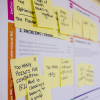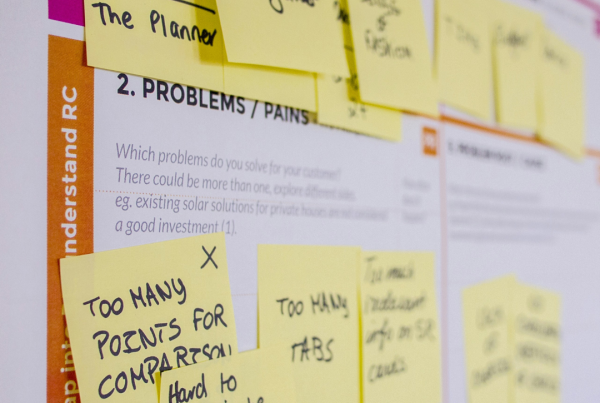Startups have inherent advantages over established businesses, but to truly capitalise on them, founders need more than a brilliant idea and a boatload of motivation. As a startup mentor, I’ve seen firsthand how a well-designed system can make all the difference in the growth trajectory. The early days of a startup are chaotic, which is why establishing some order amid that chaos is crucial.
Most startup founders I talk to have brilliant ideas, but they struggle to take them to the finish line or have no idea how to deliver a market-fit product with the constraints they face. As a startup, you’re likely working with a small team and limited resources, often under tight budgets.
Australian startups also face unique challenges. Depending on your product and industry, you may have a small domestic market. Being geographically isolated will also increase the cost of marketing and expanding internationally.
By implementing a strong product process, it will keep your team (especially you!) focused on what truly matters so everyone is working towards the same vision. It also streamlines communication, clarifies roles, and fosters collaboration, which is key in resource-limited environments.
Crucially, you can shorten the time to market and reduce costly rework by catching issues early. From an investor’s perspective, a startup with a structured process signals its capability and readiness to scale.
How to Create an Effective Product Development Process for Your Startup
If you’re not familiar with the design thinking approach, I suggest reading up on it. Fundamentally, it is a human-centred approach to problem-solving. It typically involves empathising, defining, ideating, prototyping, and testing. Design thinking uses an iterative approach, where you continually improve your product based on feedback and data.
Here’s a rough guide to creating a product development process to help you design and build products that matter in the market.
1. Understand the problem you are trying to solve
Clear vision and goals are the foundation for any product. Without understanding the “why” behind your product, it’s easy to get lost in a sea of products. Make sure your team has a shared understanding of the product’s vision and how it aligns with your startup’s business objectives. Consider:
- What problem are you trying to solve?
- Who are your target users?
- Is it a problem worth solving?
- What are the current solutions in the market?
- What unique value does your product offer?
- How do you measure success?
2. Define your customers, product, and market
Understanding your target market and customers is crucial to developing a product that addresses genuine needs. You can conduct market research, customer interviews, surveys, and competitor analysis to gather insights. This helps you build user personas to segment your audience.
Next, you’ll map out customer journeys to understand their pain points. This will help identify trends in your market and pinpoint gaps that your product can fill. For example, if you’re in the fitness industry, you might discover that many people use tracking features and love knowing that they have accomplished something daily or weekly.
3. Generate ideas and refine your solution
Now that you have a detailed view of the problem, landscape, and customer, it’s time to let your ideas go wild. There are many ideation techniques, each with its benefits and drawbacks. Then, take the most promising ideas and flesh them out into detailed product concepts.
You can run a short evaluation of the technical, market, and financial feasibility of each concept. For instance, can it be built with available technology and resources? Is there a viable market for it? Can it be profitable for your startup?
4. Prioritise each solution or feature
This is when you decide on the ideas or product functionalities you need and prioritise them according to user needs and impact. You can use prioritisation frameworks such as the Impact-Effort matrix or MoSCoW (Must-have, Should-have, Could-have, Won’t-have).
You can, at this stage, craft a simple roadmap to be more organised and strategic. As a startup, your roadmap doesn’t have to be set in stone and will evolve based on feedback, resources available, and market conditions.
5. Design a Minimum Value Product (MVP) or prototype
At this stage, your team needs to take the ideas, features, and roadmap and translate them into either a prototype or straight to an MVP. Design simple and user-friendly interfaces, focusing on ideas that will have the most impact on customers or are the best viable solutions to the problem. This allows you to test your design, gather feedback, and iterate quickly.
6. Validate your solution with users
Testing and validating with real users helps you establish market viability and detect issues early. It will also help you identify opportunities or gaps you didn’t notice. You can run several usability tests or A/B tests to validate your ideas and assumptions. Before a full-scale launch, run a closed beta test with a small group of users who are willing to provide honest feedback on the app’s usability and overall experience.
7. Iterate and improve based on feedback
The product development process doesn’t end with the launch. Product builds should always be in small, incremental steps with regular reviews to minimise risks and ensure you’re staying true to the vision.
After launching, track key performance indicators (KPIs) such as user engagement, retention, customer satisfaction, and revenue growth. Collect user feedback to gauge their satisfaction with your product. You’ll also need to continually monitor the competitive landscape to ensure your product continues to meet market needs. With a small team, you’re flexible enough to pivot when necessary.
Tip: Don’t forget your go-to-market strategy and customer support
One of the biggest mistakes startups make is not developing a plan for sales and marketing. Remember, you’re a small fish in a big sea, and you need to plan to make yourself known in the market. Consider how potential users can discover your product, determine the best price for traction, and identify effective distribution channels.
Another area you can’t afford to take lightly is customer support. Startups can offer more personalised support to customers compared to big businesses. People value good customer service, and this is a great way to grow your brand organically in the early days.
The Bottom Line
Building a successful product is about turning a good idea into something valuable, usable, and desirable in the real world. Instead of working haphazardly, startups need a strong product development process to help them stay focused, move faster, and use their limited resources wisely. Most importantly, you’ll be creating a culture of clarity and momentum—one that sets your business to scale with purpose.
If you’re interested, I offer a product strategy accelerator program to help formulate a clear direction and path forward when you’re lost in a sea of ideas.







